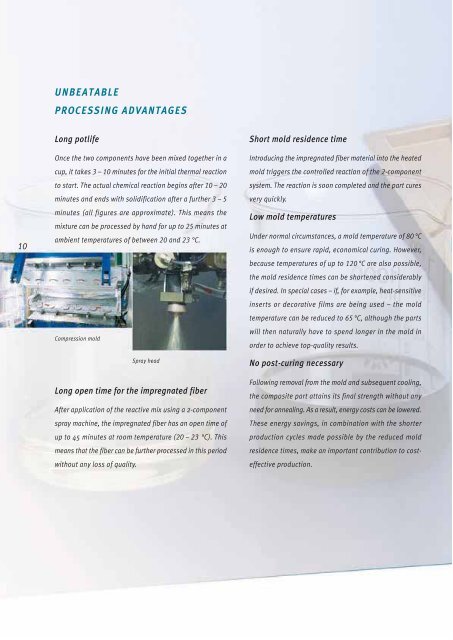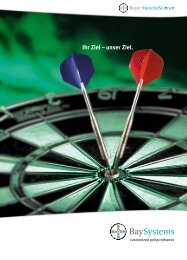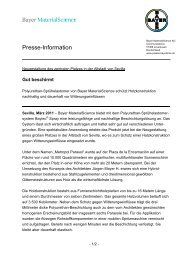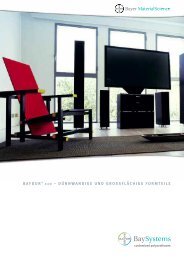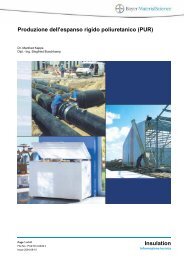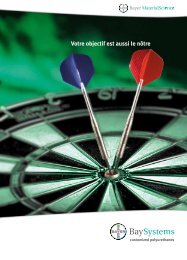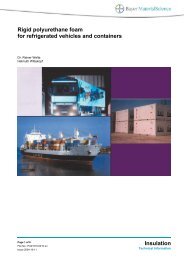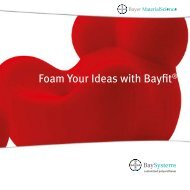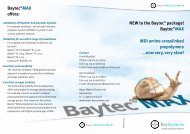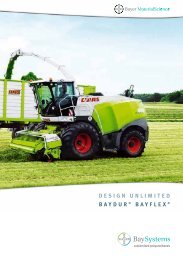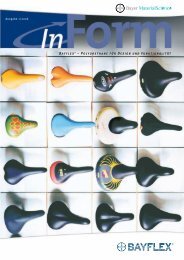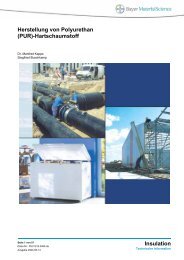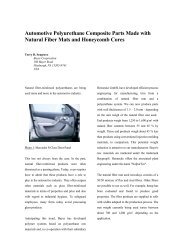BAYPREG Brosch GB neu_A4.fh11 - BaySystems - customized ...
BAYPREG Brosch GB neu_A4.fh11 - BaySystems - customized ...
BAYPREG Brosch GB neu_A4.fh11 - BaySystems - customized ...
Create successful ePaper yourself
Turn your PDF publications into a flip-book with our unique Google optimized e-Paper software.
10<br />
UNBEATABLE<br />
PROCESSING ADVANTAGES<br />
Long potlife<br />
Once the two components have been mixed together in a<br />
cup, it takes 3 – 10 minutes for the initial thermal reaction<br />
to start. The actual chemical reaction begins after 10 – 20<br />
minutes and ends with solidification after a further 3 – 5<br />
minutes (all figures are approximate). This means the<br />
mixture can be processed by hand for up to 25 minutes at<br />
ambient temperatures of between 20 and 23 °C.<br />
Compression mold<br />
Spray head<br />
Long open time for the impregnated fiber<br />
After application of the reactive mix using a 2-component<br />
spray machine, the impregnated fiber has an open time of<br />
up to 45 minutes at room temperature (20 – 23 °C). This<br />
means that the fiber can be further processed in this period<br />
without any loss of quality.<br />
Short mold residence time<br />
Introducing the impregnated fiber material into the heated<br />
mold triggers the controlled reaction of the 2-component<br />
system. The reaction is soon completed and the part cures<br />
very quickly.<br />
Low mold temperatures<br />
Under normal circumstances, a mold temperature of 80 °C<br />
is enough to ensure rapid, economical curing. However,<br />
because temperatures of up to 120 °C are also possible,<br />
the mold residence times can be shortened considerably<br />
if desired. In special cases – if, for example, heat-sensitive<br />
inserts or decorative films are being used – the mold<br />
temperature can be reduced to 65 °C, although the parts<br />
will then naturally have to spend longer in the mold in<br />
order to achieve top-quality results.<br />
No post-curing necessary<br />
Following removal from the mold and subsequent cooling,<br />
the composite part attains its final strength without any<br />
need for annealing. As a result, energy costs can be lowered.<br />
These energy savings, in combination with the shorter<br />
production cycles made possible by the reduced mold<br />
residence times, make an important contribution to costeffective<br />
production.


